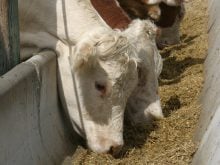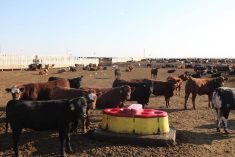Just like a roller coaster at the fair, feeder cattle future markets slowly climbed to the top and dropped fast in an action packed ride in mid-December.
Chicago Mercantile Exchange feeder cattle futures dropped limit down five days in a row before bouncing back and settling into a less volatile ride Dec. 18.
“We had five limit down days and had panic selling, yet people were trying to sell their futures position and couldn’t. Prices couldn’t go down fast enough,” said Canfax senior analyst Brian Perillat.
Read Also

Feds propose overhaul of chronic wasting disease control program
Chronic Wasting disease control program getting updated by Canadian Food Inspection Agency with feedback encouraged from producers.
CME futures trades are limited to a three cents per pound price limit per day, which wasn’t enough to allow those with long positions to liquidate once the panic selling began.
The CME took emergency steps Dec. 17 to stop the panic. It said it would increase its limit to 4.5 cents per lb. per day the following day. The increased amount allowed everyone who wanted to get out of their positions to liquidate.
“As the market has gotten so much bigger, the market can only move $3 (per hundredweight) down in a day. When we’ve gone up $70 through the year, if we want to do a $10 or $15 correction, that takes five days of constant limit down and locked up markets,” said Perillat.
The market stabilized with the larger limit on Dec 18. January closed up .475 cents per lb. at 217.075 cents and March 1.525 cents higher at 213.775 cents. On Dec. 19, January rose 3.075 cents.
“The market was pent up, was dysfunctional. Overall, we corrected significantly and we look to stabilize now.”
Perillat said the sudden drop shouldn’t come as a huge surprise to cattle producers. Markets historically fall faster than they climb when there are big rises. Feeder cattle markets rose $70 a lb. in 2014.
“To go up that fast, you’re usually going to have a pretty harsh and rapid adjustment, or correction,” he said.
Canadians were watching the CME markets closely, but the lower Canadian dollar allowed feeder cattle cash prices here to hold steady.
mary.macarthur@producer.com














